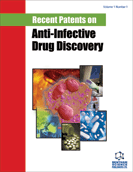Abstract
Antibiotic resistance of pathogenic bacteria is a major concern and presents a special challenge for development of alternative antibacterial modalities. One of these alternative approaches is based on using the photodynamic therapy (PDT) for eradicating bacteria. Photosensitizer-induced PDT exhibits unique properties and demonstrates efficient microbe-killing effects. The efficient and irreversible antimicrobial effects of PDT are not dependent on the antibiotic susceptibility of the pathogenic bacteria to antibiotics. Gram-positive bacteria exhibit efficient binding of the photosensitizer to the bacterial barriers, leading to immediate photoinactivation of the bacteria. Photoinactivation of Gram-positive bacteria by various photosensitizers has become a high priority, since these bacteria are responsible for life-threatening infections in humans, especially in the elderly and in compromised hosts in whom they cause hospital-acquired infections. The present review concentrates on the photoinactivation of Staphylococi, Streptococci, Propionibacterium acnes, Deinococcus radiodurans, aerobic spore-forming Bacilli by various photosensitizers and by various methods described in numerous works and patents.
Keywords: Gram-positive bacteria, patents, photodynamic inactivation, photosensitizers.
 15
15





















